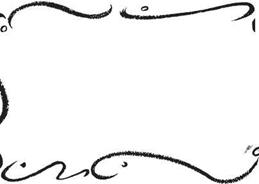Throughout the makeup world, you’ll get different opinions on if or when you should apply the theory of highlights and contours. As lighting and film stock have evolved, so has makeup. Back in the day, Makeup Artists would “blank out” the face to start with a blank canvas, and use the tools of highlight and contour to literally paint the preferred features back in. Today, this technique of “blanking out” the face is rarely used, but there will be a moment in your career when you will need to apply it—a drag makeup, for example. Today, Makeup Artists use highlights and contours in a subtle way, without blanking out the features of the face first. We create dimension and highlight features, but with a realistic touch or aesthetic. Sometimes a Makeup Artist is using the technique of highlight and contour without really knowing it. Examples include applying a lighter color under the eyebrow (highlight), or adding a touch of shade under the cheekbone to sculpt out more definition (contour).
What are highlights and contours, or highlights versus shading? Highlights are lighter colors that are applied to any area the Makeup Artist wants to stand out. Contours are darker colors that are applied
![]()
 to any area the Makeup Artist wants to sink or set back. Although the face has shape and depth, there are certain lighting situations that can turn the face flat. The more of a three-dimensional effect that the Makeup Artist can achieve, the better the makeup will be. That said, there is nothing worse than an overdone look when the Director has requested a no-makeup look.
to any area the Makeup Artist wants to sink or set back. Although the face has shape and depth, there are certain lighting situations that can turn the face flat. The more of a three-dimensional effect that the Makeup Artist can achieve, the better the makeup will be. That said, there is nothing worse than an overdone look when the Director has requested a no-makeup look.
With blending, you can create beautiful, flawless makeup using highlights and contours with no one being able to see the makeup. There are many Makeup Artists who either highlight or contour, but not both. Think about it. If you apply a lighter shade, for example, on the top of the cheekbone, you will automatically create a sink or shadow right below there for your contour. The same can be said of the opposite. If you apply a contour or shade, for example, in the temple area, you will create highlights on the top cheekbone and outer upper brow bone. We’ll go into more details with the charts on what colors work well for both highlights and contours. In the long run, it is important for a Makeup Artist to learn facial structure and to recognize the importance of where lights and darks fall on the features of the face.
PRO TIP
Forward planes catch the light. Recessed f’c planes recede.
—Gerd Mairandres, Wigmaster,
San Francisco Opera
